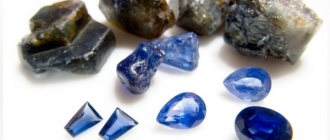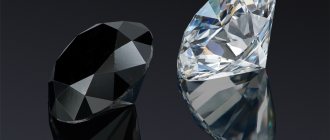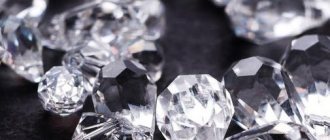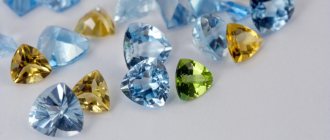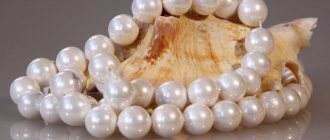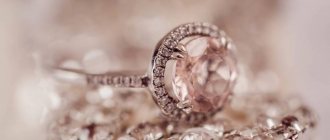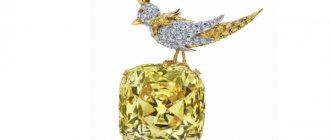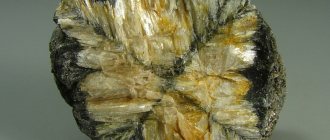Crisis is a relative concept, otherwise how can we explain that the Russian diamond mining industry doubled its sales from January to September 2022?
According to the forecasts of the deputy General Director E. Agureev, the growth trend will continue in 2022. Experts note that the demand for diamonds around the world remains high and collectors prefer to invest in rare natural gems. The Russian market, on the contrary, has reoriented towards the mass segment - economy and middle class, where production costs are low, but the demand is stable. This also explains the massive opening of jewelry stores, workshops, and purchases where trade and collateral transactions with jewelry are carried out.
The rapid growth of pawn shops has fueled the demand for appraisers. Today, the specialty “Expert appraiser of jewelry made of precious metals and stones” can be obtained in person and remotely at the Russian Academy of Crafts. The jewelry market is growing steadily, so the need for certified specialists will remain high for at least the next 10 years.
Stages of stone examination
Precious and jewelry-ornamental minerals are a unique phenomenon, rarely found in nature. Therefore, each stage of evaluating jewelry with stones requires a specialist to have comprehensive knowledge, starting with mineralogy, crystallography, gemology, the history of the emergence of the science of precious stones, and ending with economics.
Before assessing products with stones, they must be cleaned of dirt, even if visually they appear clean.
Cleansing
All jewelry must be cleaned using special cleaning products before evaluation.
It is recommended to use environmentally friendly and safe solutions, for example, JEWELER PROFI. The bioconcentrate delicately removes tarnish and returns shine and color to precious metals and stones. The composition was developed in Germany and complies with European Union standards. JEWELER PROFI is suitable for use in special washers with ultrasonic cleaning.
Ultrasonic bath for cleaning jewelry
Cleansing prepares jewelry for further examination.
Inspection
The simplest tool for inspection is a magnifying glass with 20x magnification, but it is better to use special gemological microscopes.
There are compact models: digital microscope YPC-X02 480P with USB for examining precious stones, budget version BestScope BS-8060T, microscope Crystallite ST-7045. A high-quality microscope for studying precious stones is expensive, stereoscopic, with a large field of view, with built-in and optional functionality, without which it is sometimes impossible to solve some gemological problems. 6 parameters when choosing a microscope:
- eyepieces with individual dioptric adjustment;
- desktop with dark-field condenser, iris diaphragm, built-in backlight and mounted reflected light source;
- polarizing filter for the lens;
- diffuse filter;
- 2x Barlow lens;
- additional eyepieces, allowing, together with a Barlow lens, to obtain a magnification factor of up to 320x.
The microscope must have a stable, heavy base with built-in electrics, stone holders, immersion cells, camera adapters, and a plate for cabochons and massive stones.
A modern microscope is a whole electronic universe that makes the work of a jeweler appraiser easier. In addition to the microscope, non-destructive testing methods are used to determine the properties of the stone. Each gemstone has its own methods, so determining the characteristics is a long and painstaking process. After collecting data, you can move on to the next stage.
Analysis
Based on the collected data, an analysis is carried out and the result is compared with the standards of the jewelry market.
As a result, the specialist has information about the stone, its weight, age, the presence or absence of damage, the correctness of the stone’s fastening, and cost. Another point: diamonds and precious stones are evaluated in completely different formats, but after each study a conclusion is issued.
Diamonds with “4C” characteristics
The word “diamond” comes from the Latin “adamas” - irresistible, invincible. A native element with the formula C (cubic allotropic form of carbon), colorless or painted in pale shades of yellow, gray, pink, brown, very rarely black, as well as fancy colors: lemon yellow, blue, indigo, violet, green and, most expensive ones are red. The hardest mineral with a value of 10 on the Mohs scale. Even the corundum standing in front of it with an index of 9 is 140 times “softer”.
Over centuries of diamond use, standards have been developed based on the comparative characteristics of stones. The evaluator must have impeccable color vision and experience of observation, since minor differences in the characteristics of the sample affect its value.
The Gemological Institute of America (GIA) systematized the characteristics and proposed a classification that became known as “4C”, four “si”:
Today the indicators are not enough, so it is proposed to add a fifth – confidence – a factor of buyer trust in the stone and information about it. The American Gemological Trade Association obliges diamond sellers to disclose to the buyer all characteristics of the product, including methods of refining.
You can learn more about the methods of assessing diamonds and diamond evaluation characteristics in the training course “Expert appraisal activities in jewelry and pawnshop business”
There are 2 types of diamond certificates.
1. Simplified version for diamonds weighing 0.20–0.47 carats. It includes evaluation of weight, color, clarity, shape and size.
2. A full certificate is issued to stones over 0.47 carats. Mandatory information:
- weight, color, clarity, shape, type of cut;
- % crown height and pavilion depth to diameter;
- symmetry, polishing, angles of inclination of the crown and pavilion edges, culet sizes;
- girdle description, fluorescence intensity;
- treatments that change color and clarity;
- description of features not listed above.
Documents regulating the work of the appraiser TU 25.07.1319-77 “Diamonds” and TU 117-4.2085-96 “Certified Diamonds”.
Type of diamond certificate
Round diamonds in Russia are manufactured according to TU 25.07.1319-77, TU 25-14.0018-83, TU 117-4.2003.89 and notices AITs 41-2000, AITs 64-2000. Prices are set in US dollars and converted into rubles at the exchange rate.
Only specialists with accreditation for their work can certify diamonds. The Federal Assay Office issues permission to work with precious stones; there are 18 branches in Russia.
Second C: Cleanliness
Purity is assessed by the nature and number of inclusions in the stone. Inclusions are examined at high magnification, with the exception of inclusions that are already visible to the naked eye or those that can affect the durability of the stone (cracks, for example). Thus, grading colored gemstones is very different from grading diamonds: in some cases (Kashmir sapphires are a classic example), inclusions can actually enhance beauty and value.
Various degrees of purity can be observed in these spessartine garnets from Nigeria. The oval stone on the left is visually clean, i.e. without visible defects. The average pear-shaped stone shows obvious clarity defects, while the trillion-cut stone (right) is even more obvious.
There are two key factors when assessing purity:
Visibility of inclusions:
- Size: The less inclusions are distracting, the better.
- Quantity: Generally, the fewer inclusions, the better.
- Contrast: Inclusions of low contrast (compared to the base color of the gemstone) are less noticeable and therefore better.
- Location: Inclusions in inconspicuous locations (i.e. close to the girdle rather than directly under the landing facet) have less of an impact on cost. Likewise, a feather perpendicular to the landing is less likely to be visible.
Impact or compression strength
- Type: Unhealed cracks can not only be unsightly, but can also reduce the stone's ability to resist damage. Thus, such stones are less desirable than those with well-sealed fractures. However, tiny thread-like inclusions in a pearl can actually improve its appearance and therefore its value.
- Location: A crack near the culet or corner will obviously increase the chances of the gemstone breaking. Likewise, a stone with an open fracture on the crown is more likely to crack than one with the same one in the pavilion. Inclusions in certain locations can also reflect light, making them visible throughout the gemstone.
Please note that cabochons typically have a lower clarity than cut stones. This is because inclusions are more visible in faceted stones than in cabochons.
Gemstone Valuation
Rarity
Beauty, durability, rarity, and fashion for precious stones affect their value. A rare gem is always considered expensive. Although history sometimes knows other examples.
For example, malachite, despite its softness, was considered precious. Since 1814, the Mednorudnyanskoye deposit was developed in the Urals, where isolated malachite deposits weighing thousands of kilograms were discovered. After this, malachite was transferred to the category of ornamental stones, to which it still belongs. Today in Russia the deposits have been exhausted, but malachite has no longer been transferred to the rare class.
Demand
The price of a stone is determined according to all the rules of economics: if there is demand, there will be supply.
Let's look at the example of variscite (a mineral, hydrous aluminum phosphate) and Czech pyropes. Variscite was discovered and described in 1837, but was not initially used in jewelry. When large deposits were found, jewelers began to include it in jewelry, but large quantities of goods did not allow its price to rise. The deposits were quickly exhausted. Today, the mineral is rarely found in Australia, Germany, Poland, and Spain, which is why prices for the stone on the market are high.
Czech pyropes have depreciated due to intensive mining and constant availability for sale in large quantities.
These examples show the relativity of valuation. In Russia, they adhere to the GIA (Gemological Institute of America) evaluation system, which is based on 4 parameters: weight, color, purity, quality of processing.
Weight
It is measured on scales in carats with an accuracy of 0.01 carats. For stones in jewelry, there are calculation formulas that depend on the shape of the cut. Let's take the Emerald cut.
Emerald cut Formula
for calculating mass = L x S x H x P x 0.00245, where L is length, S is width, H is height, P is density.
Color
The hue, tone, and intensity are taken into account.
Complex parameters, as they require a lot of observation. The human eye can distinguish 150 shades, but stones present their own surprises. For example, alexandrite, tourmaline, and amethyst change color depending on their orientation in relation to the eye. Alexandrite is even more insidious: in natural light it is greenish, but in incandescent light it is purplish-red. The Alexandrite effect is also visible in some corundums. Intensity shows the brightness of a color. The more saturated the color, the higher the cost of the copy.
Factors that reduce cost:
- very light shades;
- color too dark;
- shades that degrade the underlying color, for example, a yellowish tint in emerald.
Despite the apparent subjectivity, the Gemological Institute of America has developed a unified approach to the evaluation of jewelry stones. A reference scale “GemSet” has been created, which appraisers are guided by today.
31 color shades + 12 intensity options + 7 tone standards allow you to create dozens of color combinations
Purity
Absolutely pure specimens are extremely rare, so their cost is high.
It is normal for samples to have defects: cracks, stripes, spirals, bubbles - all this affects the purity and reduces the price. In the full-time course “Expert Appraiser of Jewelry Made of Precious Metals and Stones,” as well as in distance learning, one of the module sections is devoted to the issues of diagnosing defects. After training, course participants will be able to:
- diagnose diamonds, identify defects in them;
- perform gemological examination;
- work with radiographic equipment;
- conduct research in UV and IR radiation.
Despite the fact that possible defects are systematized and tabulated (GIA), without practice it is difficult to see and identify them.
Processing quality (cut)
This is another indicator that influences pricing, although to a lesser extent than purity. The discount to the price list is 5–50% depending on the condition of the stone surface. The main tool for work is a magnifying glass with at least 10x magnification. Pay attention to beauty. At first glance, this is a subjective indicator, but it includes:
- attractiveness of form;
- gem outline;
- sparkle;
- play of light;
- symmetry of parts.
At the end of the examination, an expert’s opinion is issued, an example of which students receive in specialized online courses.
The process of evaluating precious stones is labor-intensive, painstaking, and requires knowledge and experience. If you have a broad outlook, a tenacious memory, you have a keen sense of color, are patient and persistent - the specialty “Expert Appraiser of Jewelry Made of Precious Metals and Stones” will definitely suit you.
Alexandra Snigireva, especially for the Russian Academy of Crafts
We would like to express our gratitude to the teacher of the course “Expert appraisal activities in jewelry and pawnshop business,” a jeweler with 50 years of experience, Alexander Vasilievich Krivonosov, for his assistance in preparing the material.
Four K
The quality of jewelry gemstones is determined by the following four characteristics:
- Color
- Clarity
- Cut
- Carat Weight
To these we can also add a fifth C: Color Coverage. Although these factors are well defined for diamonds, there is no generally accepted system for colored gemstones.
View geometry and background
Gemstones are designed to be set into jewelry and viewed from certain angles. This is, as a rule, first with the face up, then slowly turning the girdle plane in an arc of 180°. All qualitative determinations are made with the naked eye using the same viewing geometry. It is important that the stone is rotated 360° in the plane of the girdle, so its appearance can be seen from all angles, just as a jeweler will do when installing it in a product. To ensure reproducibility and repeatability of the procedure, a standardized light source should be used on a standardized neutral background (preferably white) and at a standardized distance. The practice of grading diamonds by assessing color through pavilion facets is insane and has no place in grading colored stones.
When you're examining a colored gemstone, act like a cop - always do a background check.
The background color can significantly affect the perception of the color of the stone. This is why Burmese and Thai miners traditionally offer their rubies to buyers on a bronze platter or yellow table top. On yellow, the ruby looks redder than it actually is. Yellow cellophane wrappers or brass tweezers serve the same purpose. Don't be a sucker. Use a plain white background to judge color.
